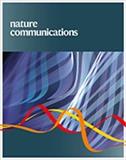
Nature Communications
《自然·通訊》
- 期刊周期:Bimonthly
- 研究方向:綜合性期刊
- 影響因子:11.878
- 通訊地址:NATURE PUBLISHING GROUP, MACMILLAN BUILDING, 4 CRINAN ST, LONDON, ENGLAND, N1 9XW
- 官網:http://www.nature.com/ncomms/index.html
- 投稿地址:http://mts-ncomms.nature.com/cgi-bin/main.plex
- 審稿速度:約1.0個月
中文簡介
《自然通訊》是一本開放獲取的多學科期刊,致力于出版生物、物理、化學和地球科學所有領域的高質量研究。該雜志發表的論文代表了對每個領域的專家都具有重要意義的重要進展。該期刊的范圍反映了自然出版集團在自然科學領域的核心實力,包括自然研究期刊服務于發表最杰出的以社區為重點的研究論文的領域。此外,《自然通訊》鼓勵在沒有專門的《自然研究雜志》代表的領域提交論文;例如發育生物學、植物科學、微生物學、生態學和進化、古生物學和天文學。編輯們特別歡迎來自跨學科領域的投稿,包括生物物理學、生物工程、化學物理學和環境科學,盡管沒有任何領域被排除在外。在所有情況下,發表在《自然通訊》上的論文都將是高質量的,不一定具有發表在《自然》和《自然研究期刊》上的論文的科學范圍。自然傳播致力于為作者和讀者提供高效的服務。一個精簡的同行評審系統,加上編輯顧問小組的支持,允許獨立的編輯團隊做出快速和公平的出版決策。透過持續的網上出版計劃,可迅速向《自然》出版集團的廣大讀者及其他人士發放已獲接納的論文。創新的web技術,包括交互式瀏覽和高效的數據和文本挖掘,增強了出版的手稿。《自然通訊》是獨立于編輯的,其編輯將獨立于其他《自然》雜志作出自己的決定。只有作者才能決定在何處提交他們的手稿。《自然》雜志將繼續發表科學上最重要的進展,《自然》研究期刊將發表其特定社區感興趣的具有里程碑意義的論文。《自然通訊》將發表來自各個科學領域的高質量論文,這些論文代表了特定科學學科的重要進展,但不一定具有發表在《自然》和《自然研究期刊》上的論文的科學影響力。對于能夠同時滿足多個自然期刊的論文,先提交哪一種期刊由作者選擇。如果一篇論文被《自然》雜志拒絕發表,作者可以使用自動稿件傳輸服務,通過編輯發送給他們的鏈接將論文提交給《自然》通訊。作者應注意,審稿人的“”“”“”“”“”評論(包括對編輯的任何保密評論)和身份將隨稿件一起移交給第二期刊的編輯。期刊編輯在做決定時將考慮先前的評論,盡管在某些情況下,編輯可能會選擇聽取其他審稿人的意見。或者,作者可以選擇請求一個新的評審,在這種情況下,他們不應該使用自動轉換鏈接,編輯將在不參考以前的評審過程的情況下評估文章。《自然通訊》與其他《自然》雜志的不同之處在于,編輯在決定是否審閱稿件時,偶爾會征求編輯顧問小組成員的意見。有關編輯咨詢小組的進一步信息可在作者指南中找到。
英文簡介
Nature Communications is an open access, multidisciplinary journal dedicated to publishing high-quality research in all areas of the biological, physical, chemical and Earth sciences. Papers published by the journal represent important advances of significance to specialists within each field.The scope of the journal reflects Nature Publishing Group''''''''s core strength in the natural sciences, and includes areas in which Nature research journals serve to publish the most outstanding community-focused research papers. In addition, Nature Communications encourages submissions in fields that aren''''''''t represented by a dedicated Nature research journal; for example developmental biology, plant sciences, microbiology, ecology and evolution, palaeontology and astronomy. The editors particularly welcome submissions from cross-disciplinary fields, including biophysics, bioengineering, chemical physics and environmental science, although no area is excluded from consideration. In all cases, papers published inNature Communications will be of high quality, without necessarily having the scientific reach of papers published in Nature and the Nature research journals.Nature Communications is committed to providing an efficient service for both authors and readers. A streamlined peer-review system, together with the support of an Editorial Advisory Panel, allows a team of independent editors to make rapid and fair publication decisions. Prompt dissemination of accepted papers to Nature Publishing Group''''''''s wide readership and beyond is achieved through a programme of continuous online publication. Published manuscripts are enhanced by innovative web technologies, including interactive browsing and efficient data- and text-mining.Nature Communications is editorially independent, and its editors will make their own decisions independently of the other Nature journals. It is for authors alone to decide where to submit their manuscripts. Nature will continue to publish the most significant advances in science and the Nature research journals will publish landmark papers of interest to their specific communities. Nature Communications will publish high-quality papers from all areas of science that represent important advances within specific scientific disciplines, but that might not necessarily have the scientific reach of papers published in Nature and the Nature research journals. For papers that could satisfy the scope of more than one Nature journal, the choice of which journal to submit to first lies with the authors.If a paper is rejected from one Nature journal, the authors can use an automated manuscript transfer service to submit the paper to Nature Communications via a link sent to them by the editor handling the manuscript. Authors should note that referees'''''''''''''''' comments (including any confidential comments to the editor) and identities are transferred to the editor of the second journal along with the manuscript. The journal editors will take the previous reviews into account when making their decision, although in some cases the editors may choose to take advice from additional referees. Alternatively, authors may choose to request a fresh review, in which case they should not use the automated transfer link, and the editors will evaluate the paper without reference to the previous review process. Nature Communications differs from other Nature journals in that editors occasionally seek advice from members of an Editorial Advisory Panel in deciding whether to review manuscripts. Further information about the Editorial Advisory Panel can be found in the Guide to Authors.
近年期刊自引率趨勢圖
JCR分區
| JCR分區等級 | JCR所屬學科 | 分區 | 影響因子 |
| Q1 | MULTIDISCIPLINARY SCIENCES | Q1 | 17.694 |
近年期刊影響因子趨勢圖
CiteScore數值
| CiteScore | SJR | SNIP | 學科類別 | 分區 | 排名 | 百分位 |
| 23.20 | 4.846 | 3.341 | 大類:Multidisciplinary 小類:Multidisciplinary | Q1 | 3 / 120 |
97% |
| 大類:Multidisciplinary 小類:General Biochemistry, Genetics and Molecular Biology | Q1 | 5 / 204 |
97% |
|||
| 大類:Multidisciplinary 小類:General Chemistry | Q1 | 14 / 409 |
96% |
|||
| 大類:Multidisciplinary 小類:General Physics and Astronomy | Q1 | 10 / 240 |
96% |
相關綜合性期刊SCI期刊推薦
- BimonthlyNature Communications
- QuarterlySCIENCEASIA
- Scientific Data
- Continuously updatedScientific Reports
- National Science Review
- WeeklySCIENCE
- Science Bulletin
- BimonthlyAMERICAN SCIENTIST
- ARABIAN JOURNAL FOR SCIENCE AND ENGINEERING
- Symmetry-Basel
